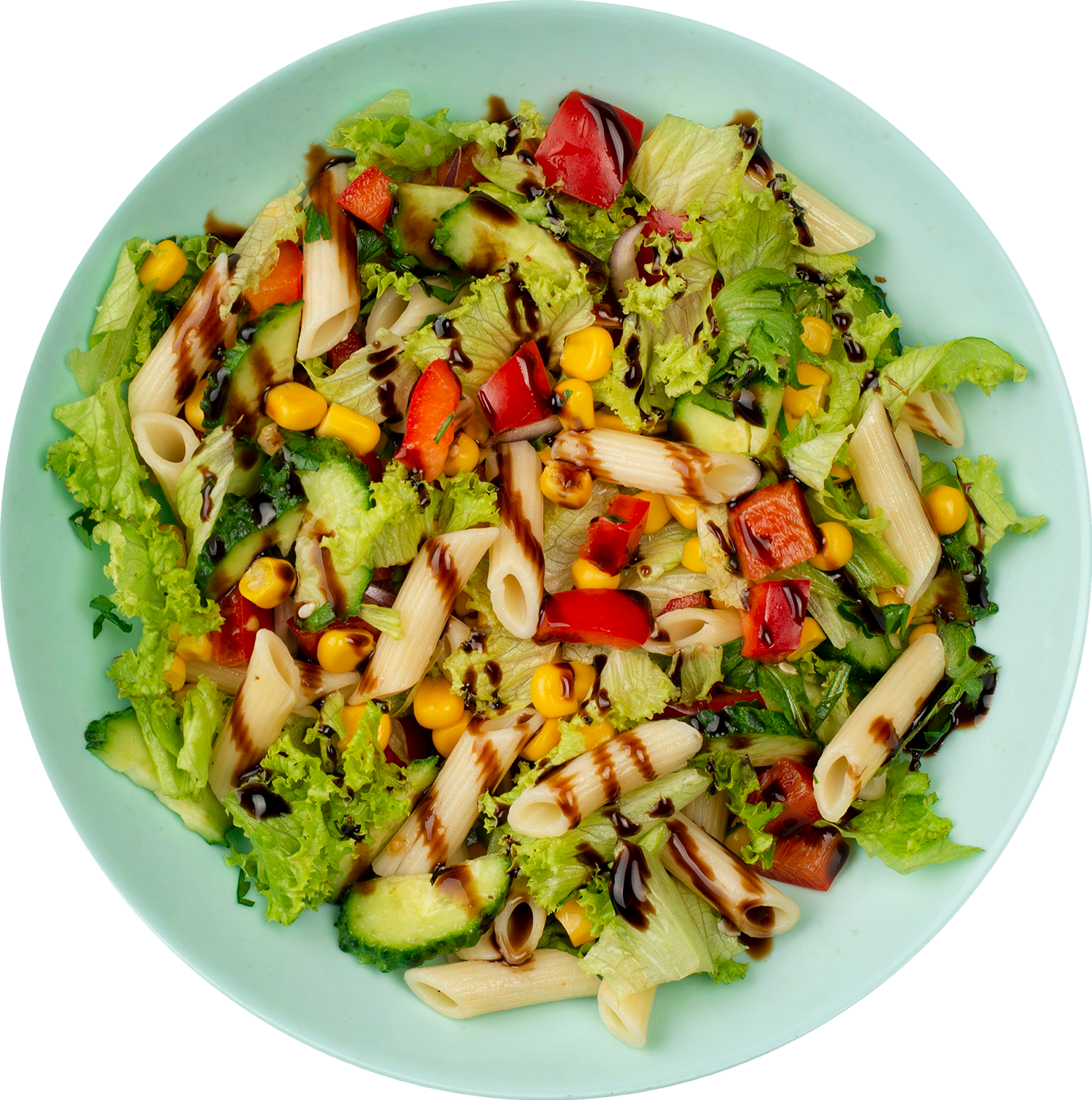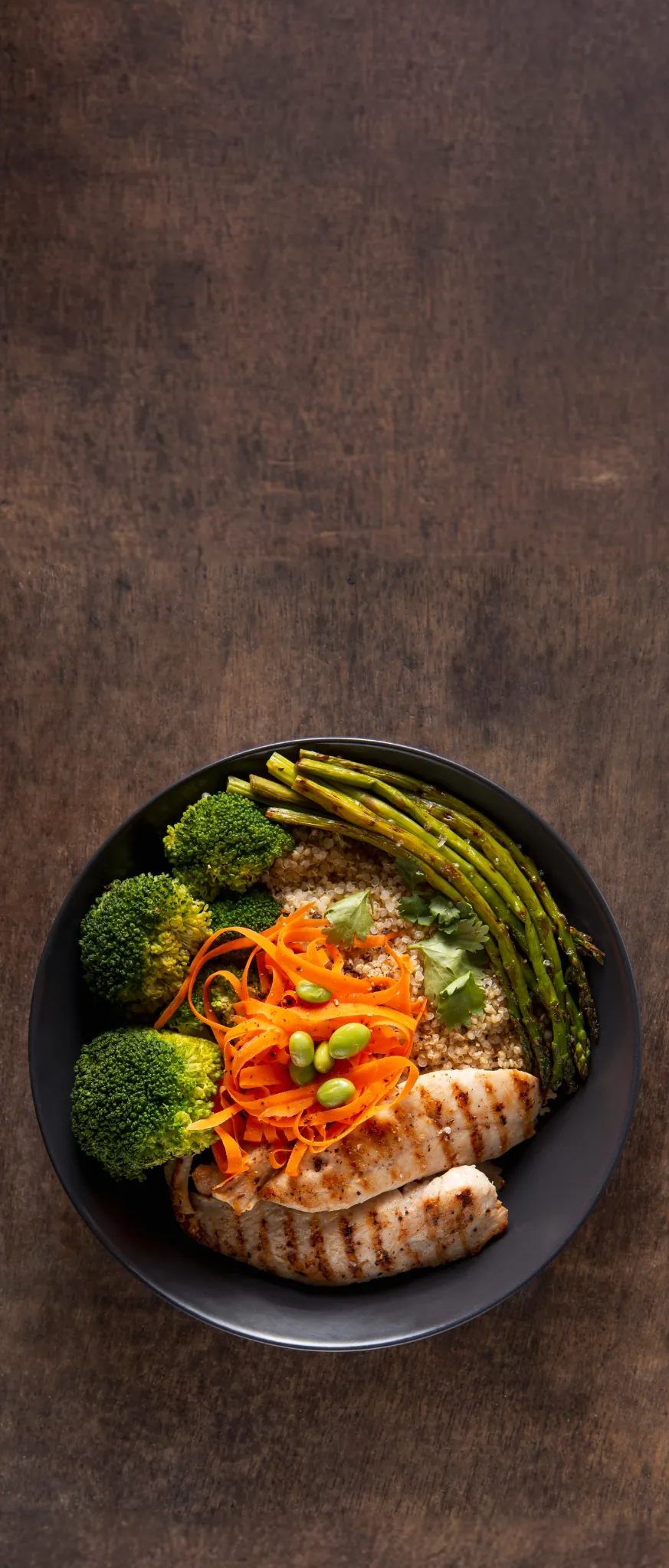The 13 Easiest, Healthiest, Tastiest Gluten-Free Ingredient Swaps
30 Oct 2023

If you live with celiac disease or a wheat allergy and you need to avoid gluten, you're in good company. In fact, previous studies have found that at least 3 million people in the U.S. (roughly 1% of the U.S. population) are on a gluten-free diet. But it's not easy changing your diet in such a big way, especially when you realize just how many products have gluten in them.
Difficult, though, doesn't mean impossible (even if it can sometimes feel that way). In fact, many gluten-free ingredient swaps for your favorite dishes involve simple, familiar ingredients, as you'll see below.
Enjoy fresh, delicious ready-to-eat meals delivered to your home.

Which foods contain gluten?
Broadly speaking, the main offenders when it comes to gluten inclusion are wheat, rye, and barley. This means that any pastas, grains, flours, and breads made from these grains contain gluten - and most of these products are wheat-based. There are some surprises in the mix too, though, when it comes to gluten-containing foods. Some veggie burgers, ice creams, and processed snacks contain gluten too, as does soy sauce.
Oats are sometimes considered gluten-free, but they're an odd case. Pure, uncontaminated oats are perfectly safe for people with celiac disease or a wheat allergy. In fact, some experts recommend including oats in a gluten-free diet. However, oats are often processed or stored in facilities that also handle wheat, rye, and barley, thus becoming contaminated with gluten before reaching store shelves. It's still possible to include oats in a gluten-free diet - just be mindful of food labels before purchasing your food.
15 easy, tasty, and healthy gluten-free ingredient swaps
1. Gluten ingredient: soy sauce / Gluten-free ingredient swap: coconut aminos
Soy sauce is a versatile ingredient commonly included in Asian dishes to add a complex and savory flavor with hints of umami. Its name, though, is slightly misleading. While soy is naturally gluten-free, soy sauce is made from soy and wheat, making it an unsafe option for gluten-averse people.
Coconut aminos are instead friendly to a gluten-free diet. Derived from coconut palm trees' fermented sap, it adds a similar flavor to a dish without any wheat. You can also opt for tamari, which is a version of soy sauce brewed without wheat.
2. Gluten ingredient: burger buns or flour tortillas / Gluten-free ingredient swap: lettuce
Burger buns and flour tortillas may be only part of most meals that include them, but they still contain enough gluten to cause a reaction. Of course, simply removing them without replacing them can make for a very messy meal. Instead, why not use lettuce? Maybe it's not the most immediately appealing replacement, but it adds a satisfying crunch to your meal while keeping it technically a sandwich.
Lettuce is also healthier than burger buns or flour tortillas - and not just for people avoiding gluten. It's also an excellent source of folate and Vitamin A, both of which are needed for healthy skin, bones, and eyesight. If the thought of a lettuce wrap doesn't appeal to you, though, there are plenty of gluten-free buns at the supermarket you can try.
3. Gluten ingredient: whole wheat pasta / Gluten-free ingredient swap: gluten-free pasta
Much of the pasta you see on shelves is made from durum wheat flour. This ingredient keeps pasta, including whole wheat pasta, off the menu for gluten-free people. But that doesn't mean you have to miss out on your favorite pasta dishes. There are plenty of gluten-free, veggie-based pasta alternatives out there made from chickpeas, rice, lentils, and corn. Each alternative offers its own unique tastes and health benefits that could just make an alternative your new favorite.
4. Gluten ingredient: store-bought ice cream / Gluten-free ingredient swap: Homemade ice cream
Ice cream might be a surprise to see on this list, but it's something to read carefully before you try it. Ice cream itself is inherently gluten free, made without any gluten-containing ingredients. It's the mix-ins and toppings that can become a problem. Additionally, a flavor as simple and familiar as vanilla can contain gluten as a thickening agent.
Making your own ice cream instead gives you complete control over what goes into it - you'll avoid gluten while making a tasty dessert. You don't always need an ice cream maker for this, either. A food processor, frozen bananas, and any gluten-free ingredients you'd like to add can do the trick. If you're not feeling handy in the kitchen, be sure to carefully read the label of any ice cream you pick up from the freezer aisle.
5. Gluten ingredient: whole wheat flour in cookies / Gluten-free ingredient swap: rice flour
Baked goods are one of the first things on the chopping block after starting a gluten-free diet. However, cookies are such dessert staples that gluten-free alternatives are common. You can simply swap out whole wheat flour for another similar baking mix. Rice flour is a common one, since it's finely milled like wheat flour and has a similar nutritional profile to boot.
6. Gluten ingredient: canned soup / Gluten-free ingredient swap: homemade soup
You might be surprised that canned soup can include gluten, but it's a common seasoning or thickening agent. Making your own soups, stocks, or broth is usually safer because you have direct control over what goes into your meals. Plus, it's the healthier and cheaper option too. You can toss more nutritious ingredients into the pot while making enough to feed yourself throughout the week if you freeze your leftovers.
7. Gluten ingredient: processed meat / Gluten-free ingredient swap: nitrate-free, gluten-free meat
Gluten is often found in the additions to food rather than the food itself, and meat is no exception. You'll often see gluten as a thickener or flavoring additive on cold cuts, jerky, and hot dogs. However, not every brand uses gluten for this, so looking at food labels before deciding on a product can save the day.
8. Gluten ingredient: Crackers / Gluten-free ingredient swap: Gluten-free snacks
Many processed snack foods won't fit into a gluten-free diet. That includes many types of crackers, pretzels, and some chips with added ingredients and seasonings, like Pringles. But you can make plenty of gluten-free swaps to satisfy any cravings. Popcorn, for example, is an excellent replacement and healthier if you get the lightly salted and unbuttered kind. You can also try veggies dipped in hummus or fruit preserves for a snack that's even better for you.
9. Gluten ingredient: Wheat, rye, barley / Gluten-free ingredient swap: gluten-free grains
You don't need to avoid all grains if you're on a gluten-free diet. Anything containing wheat, rye, and barley isn't a good fit, but buckwheat, quinoa, or millet are easy gluten-free alternatives. Plus, each one may offer additional health benefits than their wheat-based counterparts.
10. Gluten ingredient: Breading / gluten-free ingredient swap: Almond meal
It's probably no surprise that breading has gluten in it, so chicken fingers, fish patties, and other coated meats are generally off the table. However, there are options if you really want that crunch with your lunch or dinner. Almond meal, for example, can make for an excellent alternative breading. It gives chicken or fish a slightly coarser coating and nuttier flavor that can work well with the meat. You can also find gluten-free bread crumbs made of any number of ingredients, like potato starch, rice flour, or coconut flakes.
11. Gluten ingredient: pizza crust / Gluten-free ingredient swap: potato crust
Pizza is one of the harder things to find a replacement for when it comes to gluten-free ingredient swaps. There are plenty of options, but most of them are pretty different from what you might be used to. Still, that could mean it's just a matter of picking out a new favorite. One type of crust that stands out is made from potato, partly because it can mimic the golden coloring and crunch of typical pizza. You can also head to the freezer aisle to look for cauliflower crusts and other gluten-free alternatives.
This alternative pizza crust is also reasonably simple to make and easy to modify. Just mash a potato to make a dough, or shred a potato and spread it on a pan, before layering it with toppings.
12. Gluten ingredient: Veggie burgers / Gluten-free ingredient swap: Gluten-free veggie burgers, or plant-based meat burgers
Vegetables are naturally gluten-free, but not everything made with them is - and veggie burgers are a great example. Often, veggie burger manufacturing (and home-cooking) calls for the use of flour as a binding agent to hold the burger together. This, though, doesn't mean you have to always eat meat when you want a burger. Instead, you can find veggie burgers that use non-gluten binding agents. Burgers that resemble real meat, but with plant-based ingredients, may also be a gluten-free option.
13. Gluten ingredient: beer / Gluten-free ingredient swap: Gluten-free beer, wine, or cider
Many beers are brewed from barley, but thanks to recent progress in the brewing industry, companies are brewing alternatives from gluten-free sorghum, millet, and rice. These beers are easy alternatives to traditional beer, as is ditching beer for other alcoholic beverages entirely. Wine, for example, is naturally gluten-free, and so is hard cider.
Explore gluten-free dining with Meal Village
There's a whole process to switching to a gluten-free diet, and there may be an adjustment period as you figure out what you like. But you can get some help along the way with Meal Village's delivery service. Our menu's Citrus Honey Glazed Carrots and Loaded Baked Potatoes,for example, are just some of what we offer our gluten-averse customers. Beyond that, we have different options available every day - 130 meals per week, to be exact
On top of that, our meals arrive fully ready to eat, and they're made on the day of delivery using fresh, locally sourced ingredients. Browse the Meal Village menu now for delicious gluten-free meals delivered to your door - all without any chopping, cooking, or cleaning.
Enjoy fresh, delicious ready-to-eat meals delivered to your home.




